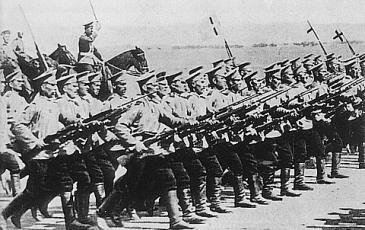| Rating: |
7.85 (11) |
| Games Played: |
11 |
| SM: |
1 |
| Turns: |
3 |
| Type: |
Stock |
| First Side: |
Central Powers |
| Second Side: |
Allied Powers |
Groß Gardienen, East Prussia, 26th August 1914: Following behind the Russian XV Army Corps which steam rolled through Lahna and Orlau on the 23rd, the Russian XXIII Army Corps (-) containing, at that time, only the 2nd Infantry Division, advanced north to cover XV Army Corps' flank. The 2nd Infantry Division intended to attack Mühlen and take German Landwehr units in the rear who were blocking the XV Army Corps' new advance from Hohenstein to Osterode. During 2nd Infantry Division's advance to Mühlen, the lake of Kownatkensee forced the Russian 2nd Infantry Division to split into two parts; one brigade advanced in column to the west of Kownatkensee, the other brigade advanced east of the same, both brigades being some four to five kilometers apart. On the German side, von Scholtz, hearing word that the German I.Armeekorps was beginning its advance towards Soldau to his south, ordered his XX.Armeekorps to pivot on Mühlen in order to cover the Landwerhr's right flank and to get on line with the Germans to his south. Around noon on the 26th, the Russian 2nd Brigade of the 2nd Infantry Division were marching just east of the village of Groß Gardienen when, as was often the case since most Russian corps were still lacking their cavalry, they blundered into the advancing Germans who struck them squarely in the flank. The neighboring 1st Brigade was now forced to send a regiment south to help their comrades, and to send a regiment northwest to help with the attack at Mühlen. Like a helpless prey, the heavily outnumbered and completely surprised Russian 2nd Brigade would become dinner for the wolves in a short sharp afternoon battle east of Groß Gardienen. [Size: small] *See the notes document for information on scenario design decisions and historical notes.

 2 - 0 - 9
2 - 0 - 9

































Overall I didn't like the scenario that much, there aren't many choices for either side and a lot depends on your luck with disruptions.